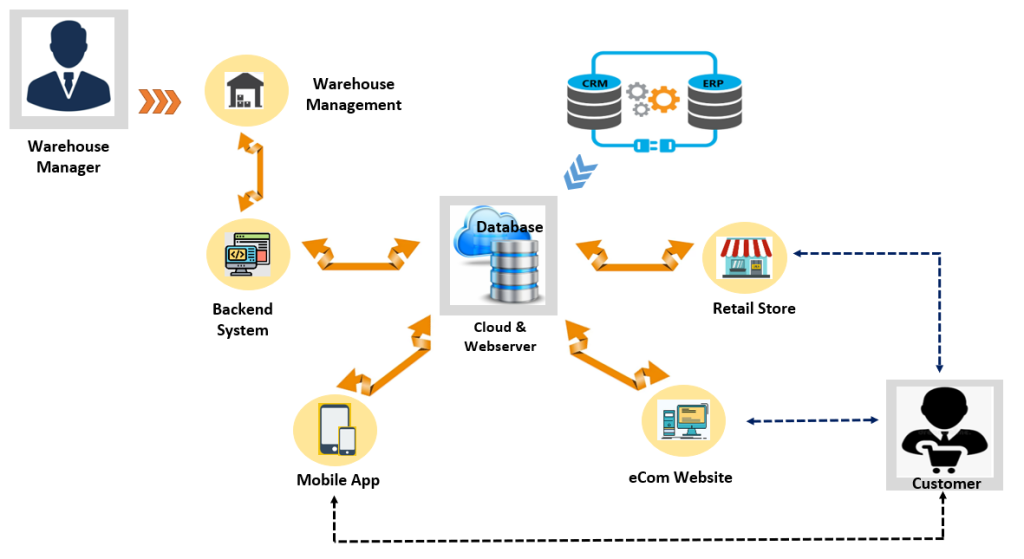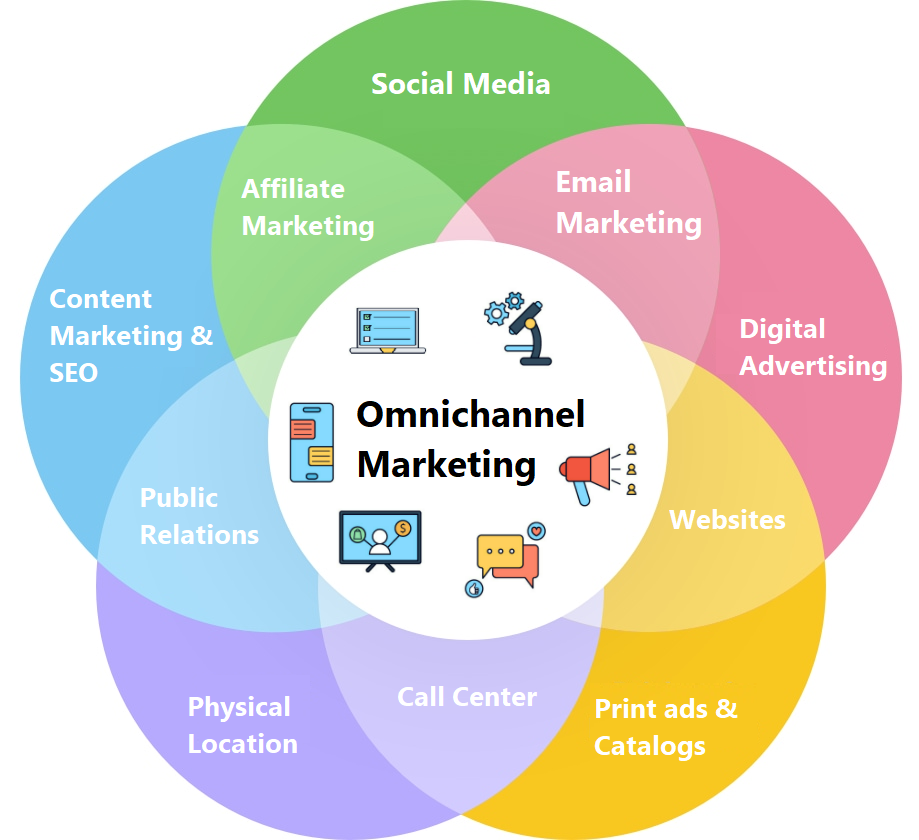The Omnichannel System is designed to meet the needs of wholesale and retail outlets. The software contains tools for managing and planning outlet sales, and purchases, managing their suppliers, controlling the types and quantities of products, analyzing their movement, replenishing the inventory, and the executing of sales orders through the digital point of sale (POS).

Here are the main Omnichannel system functionalities that the System user can perform:
- Managing Suppliers and acquiring the products stock
- Registering the inward and outward inventory items and quantities.
- Setting up customer accounts and payment policies
- Setting up the product selling pricing according to the customer’s segment, whether corporate or individual customer.
- Manage the purchase orders and register purchases costs
- Managing the product stock (Receiving, Counting, replenishing, moving)
- Issuing quotations
- Executing the Sales invoices and bills through the Point of Sale (PoS)
- Executing the eCommerce orders and the cross-outlet order
- Managing the customer order and shipments
- Calling various operational and accounts reports.
- Handling the sales returned items
- Managing the payable and receivable accounts
The Omnichannel system is a unified database of products, their quantities, prices, and locations that customers can reach and request from multiple interfaces such as:
- Outlet Points of Sale (POS) or other outlets use the same system or integrated to it electronically.
- The e-Commerce store/marketplace that the omnichannel system is associated with.
The Omnichannel System is available in annual Software as a Service (SaaS) subscription base to wholesale/retail outlets and it can be integrated into outlet’s own online store or with any associated eCommerce marketplace.
Omnichannel Marketing
Omnichannel marketing is the integration and cooperation of the various channels organizations use to interact with consumers, with the goal of creating a consistent brand experience. This includes physical (e.g. stores) and digital channels (e.g. websites).



